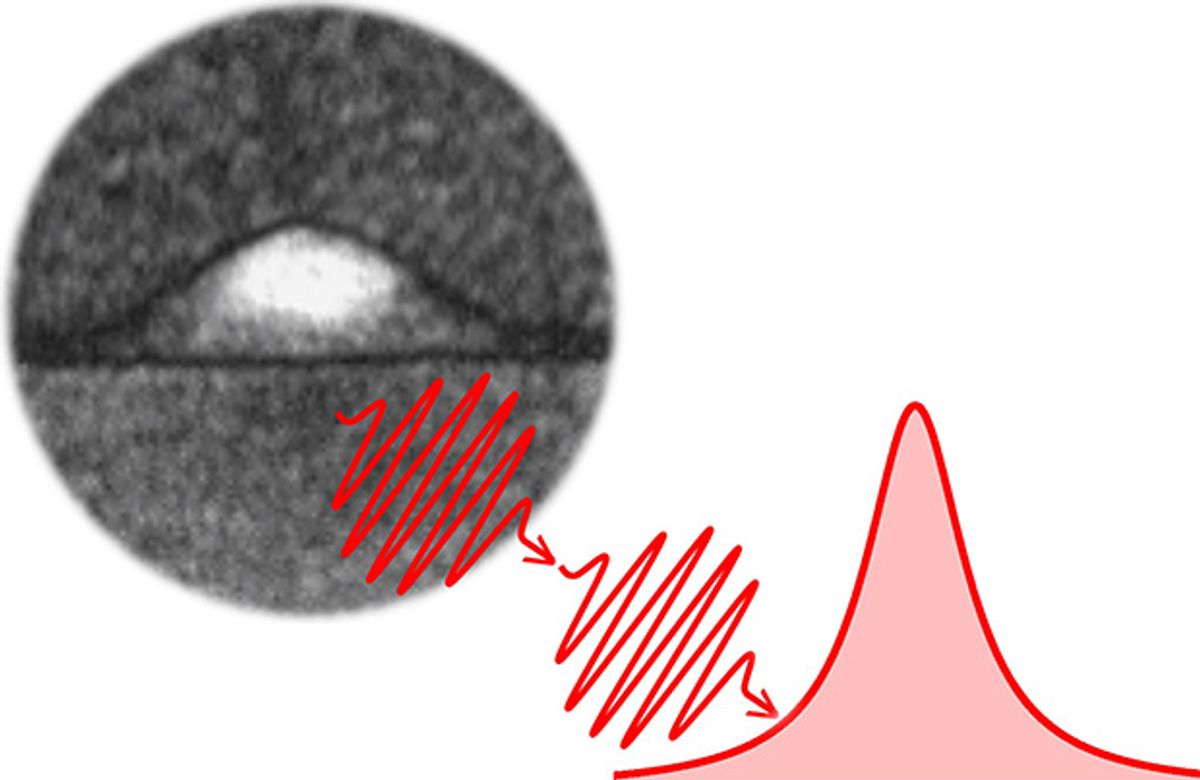Single photons will play an important role in quantum communication. This will require quantum repeaters, in much the same way that optical amplifiers are required for the transmission of digital data through optical fibers. However, these quantum repeaters will work only if all the single photons that they receive have the exact same wavelength. A team of researchers at universities in Switzerland, Germany, and France reported on 8 September in Nature Communications that they’ve developed quantum dots that can produce streams of photons with identical wavelengths.
To create the photons, the researchers used self-assembled indium gallium arsenide (InGaAs) quantum dots embedded in gallium arsenide. Each quantum dot, although it consists of about a hundred thousand atoms, traps a single electron that can occupy two energy levels. By illuminating the quantum dot with laser light, the electron is moved into the higher energy state. When the electron drops down to its lower energy level, it emits a single photon whose wavelength is determined by the difference in the energy of the two levels. “In many ways it behaves like a single atom, and this is why it is often called an 'artificial atom,’” says Andreas Kuhlmann a post-doctoral researcher at the University of Basel who was the paper’s lead author. “But because it is inside a semiconductor it is quite robust, and that is, of course, nice if you want at one point to develop a product.”
Still, unlike a single atom, the atoms in the quantum dot are an unruly bunch. The fluctuating nuclear spins of the atoms in the quantum dot interact with the electron spin, and fluctuating electric fields created by electrons hopping around cause the two energy levels of the quantum dot to wobble. This results in the emission of photons with wavelengths that vary, if ever so slightly. “In order to get indistinguishable single photons, which all have exactly the same color, we needed to find a way to suppress the noise,” explains Kuhlmann.
How did they do it? They cooled the quantum dot to 4.2 Kelvin. They could reduce the noise even further by cooling it even more, an option that is not that attractive. Despite what one might think at first blush, “4.2 Kelvin is in some ways quite warm; at some point you want to develop a product, and it makes sense to stay as warm as possible,” says Kuhlmann.
That wasn’t the only trick they employed to reduce the noise, says Kuhlmann. “The samples are grown layer by layer using molecular beam epitaxy, and when you grow these samples you will get some defects.” Crucial to limiting noise, he says, is limiting these defects because they become populated by electric charges that fluctuate. “It is extremely important that you have high-quality material and that the people who grow these samples know what they are doing,” says Kuhlmann.
The researchers overcame several hurdles. Though nuclear spins are an intrinsic property of the InGaAs semiconductor, the researchers found a way to reduce the influence of the nuclear spins. Because of its indirect band gap, it can’t emit photons when irradiated by light, explains Kuhlmann. But he and his collaborators created a quantum dot that transmits photons. And because they were able to precisely control the number of electrons trapped in the quantum dot by applying a voltage to a gate, they were able to reduce this number to one. Over a broad voltage range, the quantum dot is empty. However, at a particular voltage, the dot’s sweet-spot, the noise from the nuclear spins is strongly suppressed. “We don’t know why yet”, says Kuhlmann, “but the improvement in the photons is immediately noticeable.”
The result, says Kuhlmann:
If we switch on our laser, and there is a single electron inside this quantum dot, then this permanent excitation suppresses the fluctuations of the nuclear spins in the sample. When no electron is trapped in the quantum dot, we found that by changing the electrical field that we apply to the device, we also can suppress the spin noise.
One of the problems that still has to resolved is that a number of photons are lost when the photons exit the device via the gallium arsenide layer that covers the quantum dot. “There are ways to engineer these devices; for example, you put a quantum dot inside a nanowire, and you can send almost all the photons along the waveguide,” says Kuhlmann. There should be applications galore for the device in quantum communication and computing. “A single photon is an ideal flying qubit,” says Kuhlmann.



